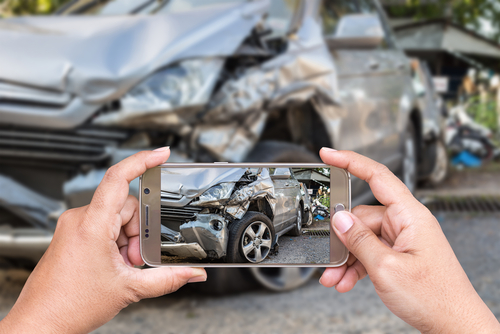- Home
- Firm overview
- Personal injury
- Mass torts
- Testimonials
- Articles
- Blog
- Contact
Menu
Who Is At Fault In A Lane Change Accident?

Who Is At Fault In A Lane Change Accident?
- Salter Ferguson, LLC
- Car Accidents

Many types of traffic accidents can occur when driving on Alabama roads. One kind is a lane change accident, where one vehicle attempts to merge or change lines and ends up colliding with another. Such incidents can result in injuries and property damage that are eligible for compensation.
To recover compensation, it’s necessary to be able to prove who was at fault for the resulting damages. Speak to a Birmingham car accident lawyer today to see what types of damages are recoverable in a lane change accident.
So who’s responsible for a lane change accident?
Determining Fault In A Lane Change Accident
In many cases, lane change accidents are the result of distracted or aggressive driving. Drivers may not look appropriately before attempting to merge lanes. Other motorists may misjudge the gap between two vehicles or they may even cut off another driver. Usually, the merging driver is the one who takes these actions, making him or her the at-fault party in this type of accident.
However, other circumstances can lead to the non-merging driver being at fault for the accident. For example, if the non-merging driver was engaging in distracted driving by being on his or her cell phone, he or she may not notice the merging vehicle in time to react to the situation, causing a rear-end accident. So long as the merging driver did so safely, the non-merging driver would be at fault for the accident.
Both drivers may also be at fault for the accident of this kind. The merging driver may attempt to change lanes without using a turn signal, ending up in the path of another driver who was speeding, causing the two of them to collide. Another situation that could lead to both parties being at fault would be if both drivers attempted to change into the same lane at once from opposite sides, resulting in a collision.
How Fault Plays A Role In A Car Accident Claim
In any type of personal injury claim, it’s the duty of the plaintiff to prove that the other person was at fault for the accident. This involves establishing a duty of care, showing how the defendant’s actions violated that duty of care, and that the result caused of the plaintiff’s injuries.
Once the plaintiff has established fault, he or she will be able to recover compensation from the defendant. However, establishing fault isn’t always enough. Alabama has strict contributory negligence statutes. Under the law, if you are even partially responsible for your lane change accident – such as engaging in distracted driving – you run the risk of losing your right to compensation.
Supporting Your Case Through The Police Report
Aside from your attorney’s investigation, one of your major pieces of evidence in establishing fault will be the police report. Insurance companies often depend on this report to help determine fault. While you can’t directly change the facts in a police report, you can ensure that every relevant piece of information you can recall about the case is in your report.
Especially important information for these cases is if you noticed the other driver violating the law during your lane change accident. Acts of reckless driving, such as speeding, count as violations of law. It’s also against Alabama law to change lanes without using a turn signal. If you saw any of these behaviors, be sure to mention them during the police report.
Depending on the situation, a lane change accident can lead to sideswipes, rear-ends, and other types of accidents, which can cause a range of damages to anyone in the car. To ensure that you can prove fault in court and earn your rightful legal compensation, consider enlisting the help of a skilled car accident attorney.